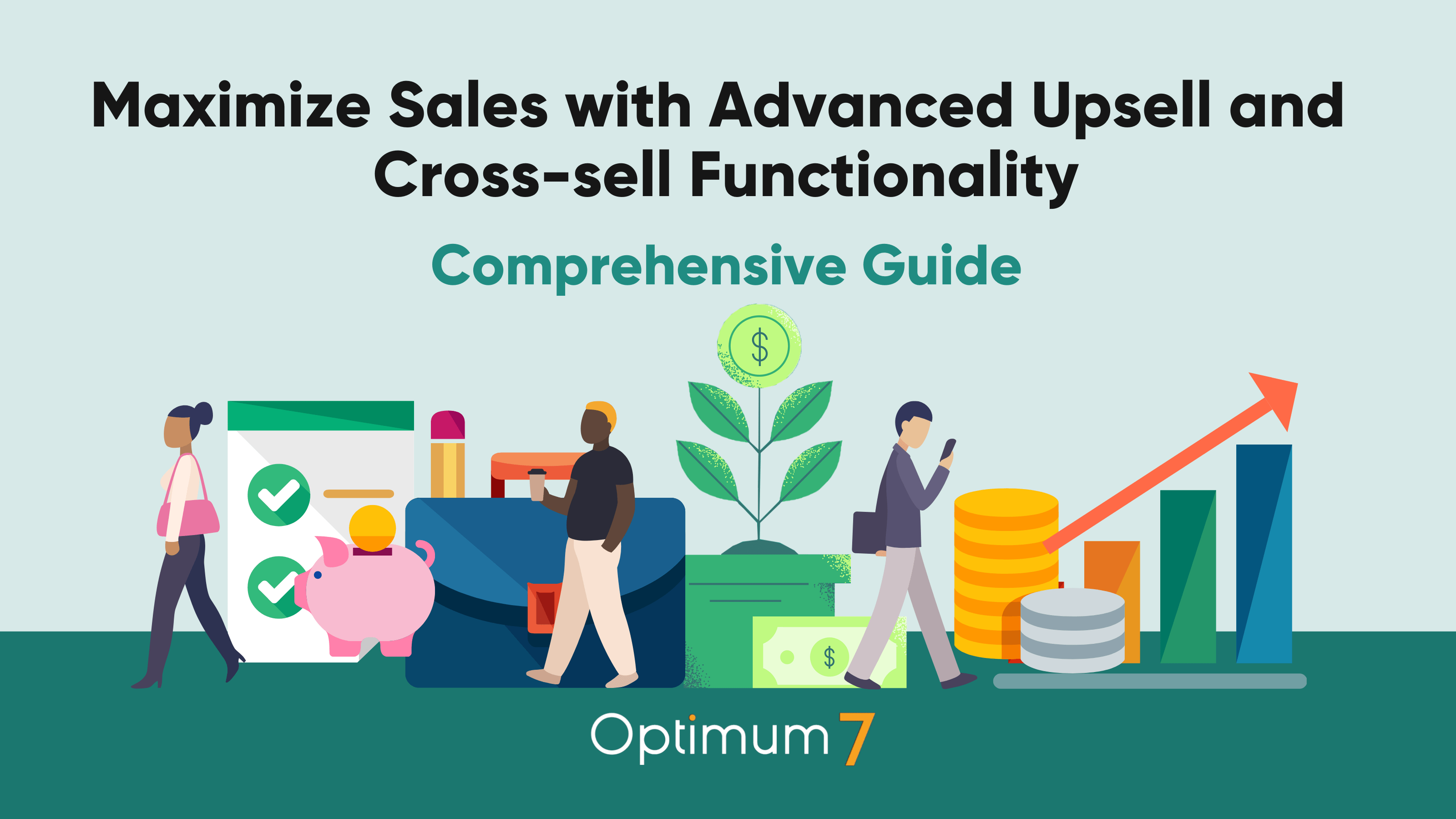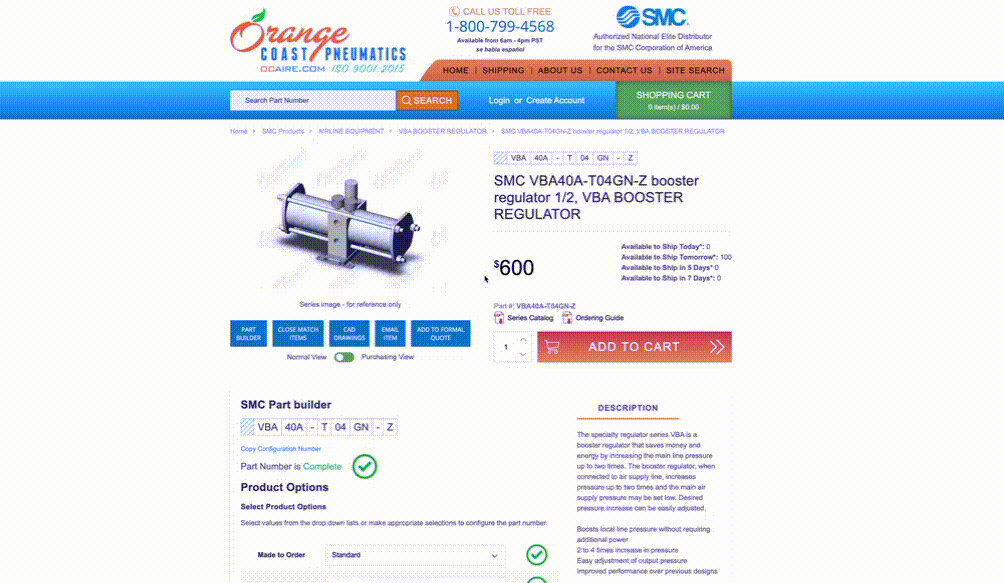As an eCommerce business owner, you are always looking for ways to increase sales and enhance customer lifetime value. One highly effective strategy many successful business owners have implemented is pre and post-checkout upsells. In this article, we will explore the power of pre and post-checkout upsells, understand their benefits, and provide effective strategies for implementing them to boost your conversions and revenue.
Understanding Pre and Post-Checkout Upsells
Upselling is a powerful way to increase revenue and customer satisfaction. Before we dive into the benefits of pre and post-checkout upsells, let’s understand their purpose.
What are Pre-Checkout Upsells?
Pre-Checkout Upsells are products or services you offer your customers before their purchase. These are related to the products in their shopping cart and typically come in the form of a special offer or discount.
For example, if a customer is buying a laptop, you can offer them a pre-checkout upsell for a laptop bag or a wireless mouse that complements their purchase. This not only increases the customer’s order value but also gives them a chance to add something that enhances their overall experience with the product.
Pre-checkout upsells can also incentivize customers to buy more. For instance, offering a discount on a second purchase or a free gift if they spend a certain amount can encourage customers to add more items to their cart.
What is Post-Checkout Upsells?
Post-Checkout upsells, on the other hand, occur after the customer completes their purchase. These products complement the customer’s original purchase and are offered via special post-purchase pages.
For example, if a customer purchases a camera, you can offer them a post-checkout upsell for a camera case or a lens that complements their purchase. Post-purchase upsells are used to entice the customer to order more while the shopping cart is still fresh in their minds.
Post-checkout upsells can also be used to introduce customers to upcoming products or services they may not have considered before. For instance, if a customer has purchased a yoga mat, you can offer them a post-checkout upsell for a yoga block or a yoga strap that can enhance their yoga practice.
Overall, pre and post checkout upsells are effective ways to increase revenue and customer satisfaction. By offering customers relevant and complementary products, you can enhance their overall experience with your brand. This will encourage them to make more purchases in the future.

The Benefits of Implementing Upsells
Upsells are an effective way to increase revenue and profits for your business. By offering complementary items to your customers, you encourage them to purchase more than they initially intended. But upselling benefits go beyond just increasing sales. Let’s look at why upsells are crucial for your business.
Increasing the Average Order Value
One of the most significant benefits of upsells is the increase in your average order value. When you offer complementary items, you give your customers the opportunity to enhance their purchase and add value to their overall experience. This leads to higher revenue and profits for your business.
Enhancing Customer Lifetime Value
Upsells are also an excellent long-term strategy to enhance customer lifetime value. By offering customers complementary products to their initial purchase, you increase the chances of them returning to your site in the future and purchasing more.
When you offer a personalized upsell to a customer, you show them that you understand their needs and preferences. This creates a positive experience for the customer, and they are more likely to return to your site for future purchases. By enhancing your customer lifetime value, you can build a loyal customer base and increase your business’s long-term success.
Improving the Customer Experience
Upsells can also enhance your customers’ brand experience. By offering personalized recommendations, exclusive discounts, and complementary products, you show your customers that you understand their needs. You also care about providing them with the best experience.
When a customer feels understood and valued, they are more likely to perceive your brand positively and recommend your business to others. By improving the customer experience through upsells, you can build a positive reputation for your business and increase customer loyalty.
In conclusion, implementing upsells is a crucial strategy for any business looking to increase revenue, enhance customer lifetime value, and improve the overall customer experience. By offering complementary products, you can add value to your customers’ purchases and build a loyal customer base for your business.
Strategies for Effective Pre-Checkout Upsells
Now that you know the benefits of upsells, let’s dive into effective strategies for pre-checkout upsells.
Targeting the Right Products
It’s essential to identify which products your customers are most likely to purchase as an upsell. To accomplish this, segment your customers’ purchase history, study their behavior, and offer them relevant products that fit their needs.
For example, if a customer purchases a new dress, you might suggest an upsell for matching shoes or accessories. By offering relevant upsells, you can increase the likelihood of an additional purchase.
Offering Personalized Recommendations
Personalization is a powerful tool in upselling. Offer your customers personalized recommendations based on their current selections, add-ons, or browsing history. By tailoring recommendations to each customer’s individual needs, you can effectively persuade them to purchase upsell items.
For example, if a customer has previously purchased a specific skincare brand, you might suggest an upsell for a new product from the same brand. If a customer purchases a certain type of camera, you might suggest an upsell for a compatible lens. By offering personalized recommendations, you can show the customer that you understand their needs and are offering solutions that fit their preferences.
Utilizing Scarcity and Urgency Tactics
Scarcity and urgency tactics are excellent tools for creating demand for your upsell items. Use tactics like limited time offers or countdown clocks to urge your customers to take advantage of special offers before they expire.
For example, you might offer a limited time discount on an upsell item, or you might display a countdown clock that shows how much time is left to take advantage of a special offer. By creating a sense of urgency, you can encourage customers to make a quick decision and take advantage of the offer before it’s too late.
By implementing these strategies for effective pre-checkout upsells, you can increase your revenue and provide customers with relevant and valuable products.
Strategies for Effective Post-Checkout Upsells
Now that you understand pre-checkout upsells, let’s move on to post-checkout upsell strategies.
Offering Complementary Products
Post-checkout upsells should complement the customer’s original purchase. By offering products that relate to the customer’s purchase history, you increase their chances of buying more.
Providing Exclusive Discounts
Offering exclusive discounts can be a highly effective way of enticing customers to purchase more. Consider offering percentage discounts, free shipping, or bundle deals to your customers.
Implementing One-Click Upsells
One-click upsells are an excellent way of simplifying the upsell process and making it easier for your customers. By clicking on a single button, customers can add upsell items to their purchase, and you can increase your sales without added friction.
Best Practices for Upselling
Upselling is a powerful technique that can increase your revenue and boost customer satisfaction. However, it’s essential to follow some best practices to ensure your upselling strategy is effective. In this article, we’ll discuss some of the best practices to remember when implementing upselling.
Keeping the Upsell Relevant
The first and most crucial practice is to keep the upsell relevant to the customer’s purchase. When you offer an upsell, it should complement the customer’s original purchase and provide additional value.
By keeping the upsell relevant, you can increase the chances of the customer accepting it and improving their overall experience. It also shows that you understand their needs and are willing to provide solutions that meet their requirements.
Offering Real Value
Another key practice is to provide real value with each upsell offer. The upsell item should be priced appropriately and offer tangible benefits to the customer. For example, if you offer an upsell for a warranty, it should provide additional coverage and protection for the product. If the upsell item appears to have no real value, it may negatively impact the customer’s experience and reduce their trust in your brand.

Offering real value with each upsell offer is crucial for building customer loyalty. When customers feel that they are getting a good deal and that you care about their needs, they are more likely to return to your store and make additional purchases.
Testing and Optimizing Upsell Offers
Finally, continuously testing the effectiveness of each upsell offer and optimizing is vital for enhancing your upsell strategy and increasing conversions. Experiment with different offers and analyze user behavior to fine-tune the campaign. For example, you can try different upsell offers for a variety of products or test different pricing strategies to see which ones work best.
By testing and optimizing your upsell offers, you can improve conversion rates and increase revenue. It also shows that you are committed to providing the best possible experience for your customers and are willing to make changes to achieve that goal.
In conclusion, following these best practices can help you create a successful upselling strategy that benefits both your customers and your business. By keeping the upsell relevant, offering real value, and continuously testing and optimizing your offers, you can increase your revenue and build customer loyalty.
Measuring Your Upsell Strategy’s Success
Upselling is a sales technique that can boost revenue and increase customer satisfaction. However, it’s essential to track and measure the success and effectiveness of your upsell strategy to ensure it works as intended. Here are some ways to do it:
Tracking Key Performance Indicators
One of the most significant things you can do to measure your upsell strategy’s success is to track key performance indicators (KPIs). KPIs are metrics that help you understand how well your strategy performs and identify areas for improvement. Some of the most critical KPIs to track include conversion rates and average order value.
Conversion rates are a measure of how many customers who are presented with an upsell offer actually accept it. By tracking conversion rates over time, you can see how your upsell strategy is performing and make adjustments as needed. Similarly, the average order value is a measure of how much customers spend on average when they make a purchase. By increasing the average order value through upselling, you can boost revenue and improve profitability.
Read more about Which KPIs to track here.
Analyzing Conversion Rates
Another effective way to measure the success of your upsell strategy is to analyze conversion rates for each upsell campaign. By breaking down conversion rates by campaign, you can determine which ones are most effective and identify areas of improvement. For example, if you notice that a particular upsell offer is consistently underperforming, you may need to adjust the offer or the way it’s presented to customers.
It’s also critical to look at conversion rates over time to see how they change as you adjust your upsell strategy. By tracking conversion rates over several weeks or months, you can get a better sense of how your strategy is performing. You can also make informed decisions about how to optimize it.
Adjusting Your Strategy Based on Data
Finally, it’s crucial to use data insights to adjust your upsell strategy based on customer behavior. Continually analyzing your campaigns and adjusting tactics in real-time can help you maximize results and improve your upsell strategy effectiveness over time. For example, if you notice that customers are consistently declining a particular upsell offer, you may need to improve the offer or the way it’s presented to make it more appealing.
Overall, measuring the success of your upsell strategy is essential to ensuring it works as intended and delivers the results you want. By tracking KPIs, analyzing conversion rates, and adjusting your strategy based on data insights, you can optimize your upsell strategy. This will drive revenue growth for your business.
Real-Life Use Cases of Advanced Upsell and Cross-sell Functionality
Upselling is a powerful marketing technique that helps businesses increase sales and revenue. By offering customers complementary or premium products, businesses can not only increase their average order value but also enhance the customer experience. Let’s look at some real-life examples of successful upsell campaigns.
Case Study 1: eCommerce Retailer
An eCommerce retailer specializing in beauty products implemented an upsell campaign that offered customers a complimentary product before purchasing. The complementary product was a travel-sized version of a popular skincare item. This upsell campaign led to a 30% increase in sales, as customers were enticed by the prospect of receiving an additional product for free. Moreover, the complimentary product helped customers experience the brand’s products and potentially convert them into loyal customers.
Case Study 2: Subscription Service
A subscription service that offered online courses and tutorials implemented an upsell campaign that offered exclusive discounts for customers who upgraded to premium plans. Customers who upgraded to premium plans received access to more courses but also personalized coaching and support.
This upsell campaign led to a whopping 70% conversion rate, as customers were enticed by the prospect of receiving more value and personalized attention. Furthermore, the subscription service’s premium plans helped increase customer retention.
Case Study 3: Digital Product Seller
A digital product seller that offered online courses and e-books utilized one-click upsells to offer customers access to related training videos. Customers who purchased the digital product were offered the opportunity to purchase additional training videos that complemented the product. This upsell campaign led to a 25% increase in sales, as customers were enticed by the prospect of receiving more in-depth knowledge and practical skills. Moreover, the additional training videos helped the seller increase customer satisfaction and loyalty.
In conclusion, upselling is a powerful marketing technique that can help businesses increase sales and revenue. By offering complementary or premium products, businesses can not only increase their average order value but also enhance the customer experience. These real-life examples of successful upsell campaigns demonstrate the potential of this technique and how it can be implemented across different industries and businesses.
Conclusion: Boosting Conversions with Upsells
The effect of Advanced Upsell and Cross-sell Functionality is undeniable. They offer a simple yet highly effective way of increasing revenue and improving customer experience and loyalty. By studying your customers’ behavior, identifying relevant upsell items, and providing real value, you can create a successful upselling campaign. Don’t forget to track your upsell campaigns’ success, analyze your results, and make adjustments where needed.
Key Takeaways
-
Pre-checkout upsells occur before the customer completes their purchase, and post-checkout upsells come after they complete their purchase.
-
Upsells can increase average order value, enhance customer lifetime value and improve customer experience.
-
Target the right products, offer personalized recommendations, and utilize scarcity and urgency tactics for effective pre-checkout upsells.
-
Complementary products, exclusive offers, and one-click upsells are effective post-checkout upselling strategies.
-
Ensure the upsell is relevant, offer real value, and continually test and optimize your upselling strategy.
-
Measure the success of your upsell campaigns by tracking KPIs, analyzing conversion rates, and adjusting based on data insights.
Implementing Upsells in Your Business
Implementing upsells in your business may seem daunting at first, but by implementing Optimum7’s Advanced Upsell and Cross-sell functionality to your website and following the strategies and best practices, you can create an effective and customer-centric upselling campaign that will increase conversions and revenue for your business. Start small, test often, and optimize based on results to maximize success.



